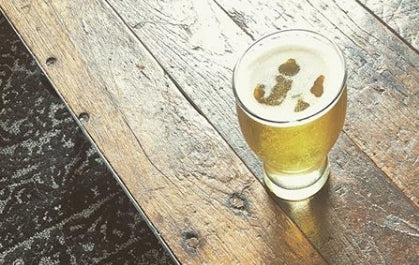FREE SHIPPING ON USA ORDERS OVER $150
FREE SHIPPING ON USA ORDERS OVER $150
September 10, 2018 0 Comments
A recent cold snap and the beginning of a new school year have me thinking about all things fall. The air has changed from August’s oppressive blanket of smoke-tinged haze to the brighter, invigorating panacea of September’s skies. And while the early release of Starbucks's pumpkin spice latte has left a less than cinnamon-sweet taste in my mouth, I can’t help but look forward to our annual apple picking trip at Papa Mark's house.

(Photo: Kaboompics)
Apples come off as such a seemingly simple piece of produce- available year-round in every market across the land, including those tiny rural groceries where iceberg lettuce still holds ground as an acceptable salad green. Despite being overshadowed by the season’s hyper-marketed gourds, apples maintain a storied past. Having traveled to the Americas with European settlers after thousands of years of cultivation in central Asia, apples have made their way into our lives as the most uncomplicated snack food ever; buy, wash, eat.

The cultural, religious and mythological importance of apples abounds. Greek goddesses quarreled over the fruit in the time preceding the Trojan War and we all know how Adam and Eve’s insistence on taking just one bite of the forbidden bounty turned out.
The apple’s significance to pop-culture continues the fruits’ legendary affliction of innocent bystanders. Snow White, Charlie Brown and Carrie Bradshaw experienced their share of bad apple-ing while Sir Isaac Newton rocked the science world with his apple-induced contemplation of gravity. Apple Records and The Big Apple round out the pomme’s famed references (I am determined to deny Apple, as in the mega corporation taking over the world, any more PR).

(Photo: Wikipedia, Howe's Historical Collection)
Finally, we must discuss the folkloric hero and original man-about-town, Johnny Appleseed. Sprouted from humble colonial roots, this larger-than-life character was born John Chapman in 1774. Heading to the western frontier as a young man (Ohio, Indiana, Pennsylvania at the time), the legend of Johnny Appleseed stars the imposing frame of the 6 foot+ man who wore a tin pot for a hat and considered shoes non-essential. Planting nurseries from seed rather than through traditional grafting methods, Johnny Appleseed fed a population thirsty, rather than hungry, with his produce. You see, the apples produced by Johnny’s trees were prime for cider production, the fruit’s mainstay in the early 19th century. And here we are, packing the fruit in lunches and pretending they will replace fries at the local fast food joint; bring on the cider!

(Photo: Last Chance Cider Mill)
In honor of the fall apple harvest, here are 10 facts about apples to help you brush aside contemporary cravings for overplayed pumpkin recipes in favor of a hardy, historical treat.

(Photo: Last Chance Cider Mill)
While we love our pumpkin muffins, pies and yes, sometimes our pumpkin spice lattes, this fall, remember to give yourself a chance to enjoy an apple or two. We promise you won’t regret it.
(Cover photo:ama-m.weber)

